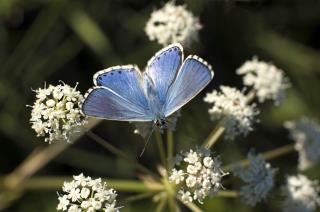This week saw the UN-sanctioned "International Day for Biological Diversity", dedicated to promoting its new theme "From Agreement to Action: Build Back Biodiversity". The next UN Climate Change Conference, COP 28, which takes place in Dubai, UAE at the end of the year will advance this agenda further, as well as take stock of the implementation of the Paris Agreement objectives for biodiversity.
Recognition of biodiversity loss and the need to change damaging practices is a starting point. The UN released a climate statement this week highlighting that everyone can now acknowledge the intrinsic connection between biodiversity and climate: "A stable climate is the foundation for healthy and thriving biodiversity, which is critical to stabilise the climate system and ensure the long-term wellbeing of all, including nature and future generations," said the UN Climate Change Executive Secretary, Simon Stiell.
In Europe the EU’s biodiversity strategy for 2030, together with the Green Deal, will tackle the unsustainable use of land and sea, the over exploitation of natural resources, pollution and invasion of alien species. Birds and Habitats Directives will be important for the cement sector which must also play a role to protect and encourage the development of local ecosystems.
Having clear and structured biodiversity plans and programmes are now parts of cement producers’ sustainability objectives. Holcim has announced that it will work with the Science-Based Targets Network to submit nature targets for validation in 2023, as part of a global initiative to set the world's first standards for ambitous and measurable corporate action for nature. Just as in tackling decarbonisation, roadmaps and targets are emerging for biodiversity to give better direction around the directives and to plan for the future.
CEMBUREAU’s Biodiversity Roadmap calls for the ‘mitigated hierarchy’, which is a structured biodiversity management approach to halt biodiversity loss. The roadmap directs attention to four core focus areas. These are ecosystem rehabilitation and ecosystems services, EU pollinators initiative, invasive species (focus on plants) and protected species. Targeting of a 50 per cent reduction in the number of red listed species threatened by invasive alien species is central to this roadmap, as well as setting additional legally binding EU nature restoration targets.
Such guidelines exist to encourage cement producers to take a proactive approach. This could mean leaving land untouched after it has been quarried for a swifter return to nature. Temporary habitats may be the best solutions for land which is not ready to be rehabilitated. Furthermore, cement producers can be proactive in annually recording and tracking the number of pollinators, for example, and introduce beehives to their land to increase pollination.
Proactive cement producers
While planning, legislation and finance will direct the strategies of cement groups and individual plants, the key objective must be to interact better with nature and put protection measures in place. A quick look of the social media posts from the cement sector this week identifies several cement producers already prioritising biodiversity.
Mannok Cement in Ireland has been giving live viewing updates of the country’s first 'Kestrel Cam’. In Northern Ireland Breedon Group has been inspiring children from the local primary school to visit the Castlepollard Quarry in Lisburn to build bird and bat boxes. Community involvement and understanding is important for gaining support and maintaining local interest in the activities of local cement plants.
The Global Cement and Concrete Association (GCCA) has also been highlighting biodiversity projects from its members this week. These included Taiwan Cement’s Coral transportation and cultivation project, which achieved a coral restoration rate of 89 per cent in the 2Q22. The coral replacement reef was made by Taiwan Cement’s Portland cement Type II, showing that cement itself can be a starting point for biodiversity projects.
There is also a growing emphasis on cements that use reduced water usage. Mangalam Cement Ltd in India, for example, has released its ProMax Cement this month for high cement strength and quality in construction projects while reducing water consumption.
Partnerships with companies outside of the cement sector that specialise on biodiversity are also expected to increase. Only this week, CEMEX announced that it has expanded its collaboration framework with Cinclus, which is a renowned conservation entity to better manage and restore its quarry sites in Spain.
Summary
Biodiversity day has illustrated some of the variety of projects that the cement industry takes part in. Cement producers are in an ideal position to contribute to the positive management of the habitats around them, as well as manage the impact of industrial activity on the local ecosystem. As managers of their surroundings, cement producers should be aware and committed to their responsibility for maintaining the plants, animals and ecosystems existing on their land.
Published under Cement News


